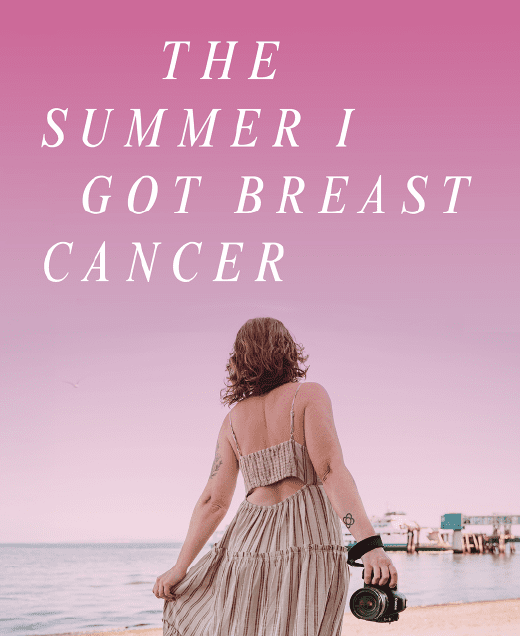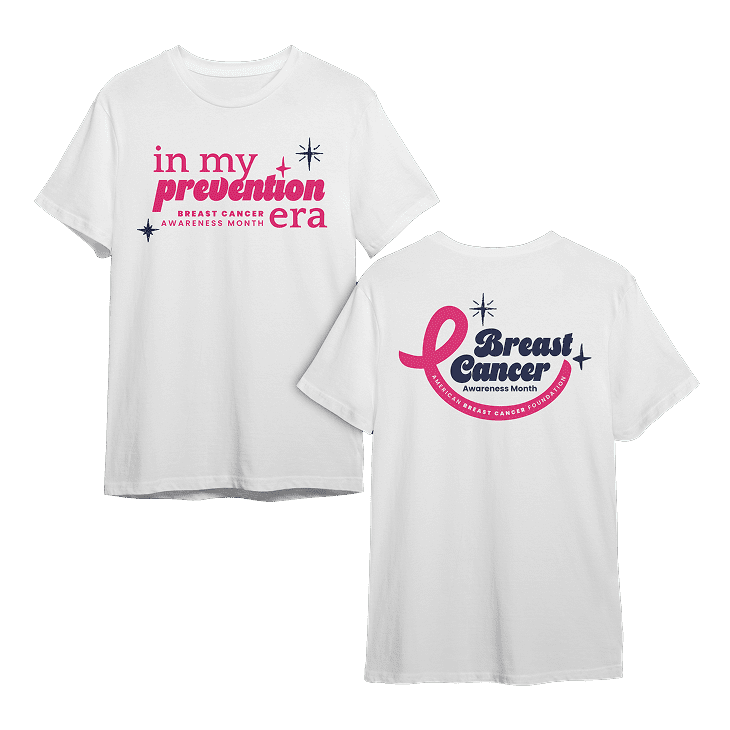
I’ve been thinking about this post for some time. Am I “sick enough” to share this news? Is it valid when I’m only stage 1A?
Stage 1A breast cancer means the tumor is small, has not spread to the lymph nodes, and was caught early. In my case, it was found during a routine (for me) breast MRI. If I had not been closely monitored because of my family history and dense breast tissue, it could have been years before detection. I feel beyond grateful for this, but there is also guilt attached to this diagnosis.
When most of us hear the word cancer, we immediately feel fear and worry for the person delivering the news. When I’ve been met with that reaction, it makes me wonder if I’m worse off than I actually am. Have I been in denial? Because of that, I decided to wait to share this diagnosis. My journey has been different from the cancer stories I’m used to hearing. However, the more I talk about it, the more I’m learning that a non-terrifying diagnosis is more common than I thought.
Six years ago, my sister was diagnosed with stage 2A invasive ductal carcinoma breast cancer. She fought bravely and is doing well today. At the time, I was told that I had a fairly low chance of receiving a similar diagnosis in the future. Based on that, I met with an oncology nurse practitioner and a genetic counselor. Although I tested negative across the board for any known gene mutations, I was advised to have additional screening each year. This meant alternating between mammograms and breast MRls every six months. More often than not, an ultrasound was added in as well, thanks to the nickname I had earned: “Cysty McCysterson.” (Yes, a doctor actually gave me that nickname.)
My first breast MRI in 2023 found “something” because this method of screening is effective. I held back tears during a subsequent biopsy, but sobbed all over the nurses once it was over. It was terrifying to think about the possible outcomes. Thankfully, the results came back benign, labeled as fibrocystic changes. Discussions with doctors and my own research reassured me that these spots wouldn’t increase my risk of breast cancer. My annual mammogram that year was also clear, with the usual note that dense breast tissue could reduce the sensitivity of the scan. I was used to that.
Last spring, my MRI showed the same two spots had grown slightly and changed. Once again, a biopsy was performed (this time with no tears), and once again the results were benign. A mammogram six months later told the same story.
When it came time to start the cycle again this year, I felt torn between gratitude for such thorough care and a strong desire to avoid the anxiety and discomfort of the process. I was sure the scans would find the same spots and that another biopsy would end the same way. Still, I decided to move forward with the MRI, grateful for this level of surveillance just in case.
This time, the spots had indeed grown and changed again. The radiologist recommended I see a surgeon rather than have yet another biopsy. I put off the appointment for a bit, but when I met with the surgeon in June, she agreed with me: a lumpectomy would easily remove the two spots that were causing stress in my body and mind each year. Life went on, family visited, and then Shawn and I were stunned to read the results when they arrived one evening. One of the lumps was malignant, diagnosed as mixed ductal and lobular carcinoma.
We met with the surgeon the next day. I was in disbelief, but I didn’t feel scared. She explained that this cancer was slow-growing and likely hadn’t spread. With confidence, she told me that a second lumpectomy and sentinel node biopsy, followed by radiation, would be just as effective as a mastectomy. Sentinel nodes are the first to show any signs of spread. If I was lucky, an injection the night before surgery would “light them up,” making it easier for her to remove them while minimizing damage to my body.
Weeks later, I was back in surgery. My parents flew in to help with our son and appointments. The plan was to remove as many sentinel nodes as could be found. Four nodes “lit up,” and the surgeon also removed the remaining malignant margins. On the same day, I received good news: a MammaPrint had been performed on the portion of the tumor removed during my first surgery, and it showed that my cancer would not benefit from chemotherapy. That was a huge relief, especially knowing others are not as fortunate. Also, what an amazing development in medical technology!
Recovery from the second surgery was tougher than the first. My arm felt numb and burned, though I still somehow managed 13,000+ steps the very next day. I rested with my family, and a couple of weeks later my sister came to stay. By then, I was feeling much better, and we shared some mental healing time together. Once she left Seattle, I met with a radiation oncologist, then an oncologist, and began treatments.
During my meeting with the radiation oncologist, I learned that, at my stage, a lumpectomy combined with radiation could very well mean the cancer will never return. She explained the possible side effects: weakened ribs that could break easily, lung scarring that might confuse future scans, and most concerning, even at low risk, an increased chance of heart disease. Since heart disease is the leading cause of death for women, that was difficult to hear. It’s a hard pass on all of the above for me.
To reduce this risk, my radiation treatments use a deep inspiration breath hold (DIBH). With a snorkel-like tube in my mouth, I take a deep breath until I hit a threshold matched to my lung capacity. The machine then cuts off my breathing, and I must hold it until the treatment ends, about 30 seconds on each side. I go to these treatments daily for 21 days, excluding weekends.
So far, I have only had mild fatigue and some back pain from the awkward position I’m in during treatment. In the waiting room, a community has formed among patients who all share the same daily appointment time. We are all at different points in our cancer journeys, facing different levels of severity, but there is a shared kindness in every conversation.
In addition to the minor physical challenges I’ve had are the complicated emotions “I’ve been managing.” I’m clearly still coming to terms with this “surprise”, but as women, we are told to get mammograms starting at age 40 (!). Mine started at age 30 due to family history, yet a mammogram did not catch this. An ultrasound didn’t either, even though I was once told (by a doctor) that ultrasounds catch cancer. It was the MRI that I mildly resisted that ultimately caught it. So while I still deeply believe in the value of mammograms, I am left questioning their effectiveness as the only screening method for women with dense breasts and family history.
I hope that others in similar situations can access the same level of care and screening that I’ve had, though I know that is not realistic. I feel incredibly lucky that this was caught early and deeply grateful to our village for showing up in such big ways. Summer’s been a bust, but pies, pizzas, donuts, bagels, homecooked meals, cards, and a whole lotta love have made it so much better. If you are walking a similar path, please know that you are not alone.
NOW IT’S TIME TO GIVE BACK…
I’m fundraising for The American Breast Cancer Foundation for my 51 st birthday this year. Their mission is to provide education, access, and financial assistance to aid in the early detection, treatment, and survival of breast cancer for uninsured and underserved individuals, regardless of age, race, or gender. This is needed more than ever.
-
Name: Heather L.

Want more merch? Check out our store with shirts, hats, and more: all proceeds support our Breast Cancer Assistance program.



